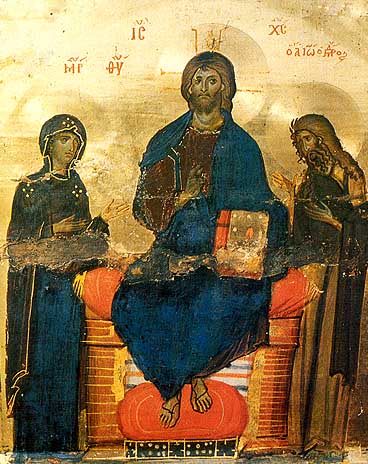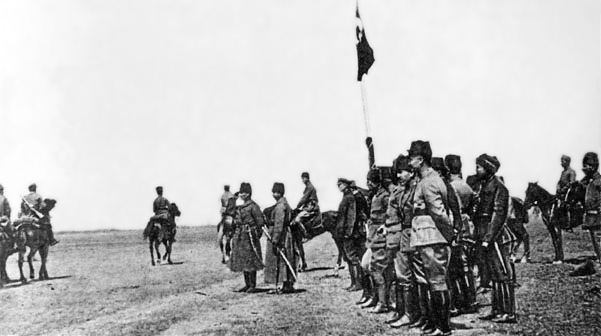|
Altıntaş
Altıntaş is a town and a district of Kütahya Province in the Aegean Region, Turkey, Aegean region of Turkey. History Altıntaş was previously known as "Kurtköy". The district's name means "goldstone" in Turkish and was given due to the large stone deposits, especially marble deposits in the area. Chalcolithic artifacts have been found in the Altıntaş area. The Roman city of Soa (ancient city), Soa is located within the district boundaries. The marble in the area was mined in antiquity, having been used in the construction of the ancient city of Aizanoi nearby. Near today's Pınarcık, Altıntaş, Pınarcık village, a Roman city called "Abya" produced its own coins. In the Osmaniye, Altıntaş, Osmaniye village, a mausoleum from the 2nd or 3rd century AD was excavated. In the district center of Altıntaş, a tomb called the Seydisül Tomb, built in the late 19th or early 20th century, contains an arch from the Byzantine Empire, Byzantine era, depicting Deesis. During the ... [...More Info...] [...Related Items...] OR: [Wikipedia] [Google] [Baidu] |
Soa (ancient City)
Soa was a town of ancient Phrygia, inhabited in Roman Empire, Roman and Byzantine times. Its name does not occur in ancient authors, but is inferred from epigraphic and other evidence. Its site is located near Altıntaş in Anatolia, Asiatic Turkey. References Populated places in Phrygia Former populated places in Turkey Roman towns and cities in Turkey Populated places of the Byzantine Empire History of Kütahya Province Altıntaş District {{Kütahya-geo-stub ... [...More Info...] [...Related Items...] OR: [Wikipedia] [Google] [Baidu] |
Kütahya Province
Kütahya Province ( tr, ) is a province in the Aegean region of Turkey. It is 11,875 km in size, and the population is 571,554 (2014). In 1990, Kütahya had a population of 578,000. The neighboring provinces are Bursa to the northwest, Bilecik to the northeast, Eskişehir to the east, Afyon to the southeast, Usak to the south, Manisa to the southwest and Balıkesir to the west. The capital city of the province is Kütahya. History Kütahya’s history extends as far back to the years 3000 BC, although the specific date of its establishment is unknown. According to old sources, Kütahya’s name during the ancient eras was recorded as Kotiaeon, Cotiaeum and Koti. The Phrygians are the oldest group of people to have settled in the province’s lands. The Phrygians, who came to Anatolia in 1200s BC, entered the Kingdom of Hittite’s lands and organized themselves into a government. In 676 BC, by defeating the Phrygian King Midas III, the Cimmerians took control of ... [...More Info...] [...Related Items...] OR: [Wikipedia] [Google] [Baidu] |
Turkey
Turkey ( tr, Türkiye ), officially the Republic of Türkiye ( tr, Türkiye Cumhuriyeti, links=no ), is a list of transcontinental countries, transcontinental country located mainly on the Anatolia, Anatolian Peninsula in Western Asia, with a East Thrace, small portion on the Balkans, Balkan Peninsula in Southeast Europe. It shares borders with the Black Sea to the north; Georgia (country), Georgia to the northeast; Armenia, Azerbaijan, and Iran to the east; Iraq to the southeast; Syria and the Mediterranean Sea to the south; the Aegean Sea to the west; and Greece and Bulgaria to the northwest. Cyprus is located off the south coast. Turkish people, Turks form the vast majority of the nation's population and Kurds are the largest minority. Ankara is Turkey's capital, while Istanbul is its list of largest cities and towns in Turkey, largest city and financial centre. One of the world's earliest permanently Settler, settled regions, present-day Turkey was home to important Neol ... [...More Info...] [...Related Items...] OR: [Wikipedia] [Google] [Baidu] |
Deesis
In Byzantine art, and in later Eastern Orthodox art generally, the Deësis or Deisis (, ; el, δέησις, "prayer" or "supplication"), is a traditional iconic representation of Christ in Majesty or Christ Pantocrator: enthroned, carrying a book, and flanked by the Virgin Mary and St. John the Baptist, and sometimes other saints and angels. Mary and John, and any other figures, are shown facing towards Christ with their hands raised in supplication on behalf of humanity. Early examples often appeared on the templon beam in Orthodox churches or above doors, though icons and devotional ivories also feature the Deesis. After the development of the full iconostasis screen there was room for a larger "Deesis row" or "Great Deesis" of full-length figures, and the number of figures expanded, both in Byzantium and in Russia. Usually this row is above the level of the doors, and usually below (sometimes above) the row depicting the Twelve Great Feasts. The central Christ is the ... [...More Info...] [...Related Items...] OR: [Wikipedia] [Google] [Baidu] |
Populated Places In Kütahya Province
Population typically refers to the number of people in a single area, whether it be a city or town, region, country, continent, or the world. Governments typically quantify the size of the resident population within their jurisdiction using a census, a process of collecting, analysing, compiling, and publishing data regarding a population. Perspectives of various disciplines Social sciences In sociology and population geography, population refers to a group of human beings with some predefined criterion in common, such as location, race, ethnicity, nationality, or religion. Demography is a social science which entails the statistical study of populations. Ecology In ecology, a population is a group of organisms of the same species who inhabit the same particular geographical area and are capable of interbreeding. The area of a sexual population is the area where inter-breeding is possible between any pair within the area and more probable than cross-breeding with ind ... [...More Info...] [...Related Items...] OR: [Wikipedia] [Google] [Baidu] |
Battle Of Dumlupınar
The Battle of Dumlupınar ( el, Μάχη του Τουμλού Μπουνάρ, translit=Máchi tou Toumloú Bounár, tr, Dumlupınar (Meydan) Muharebesi, lit=Dumlupınar (Field) Battle), or known as Field Battle of the Commander-in-Chief ( tr, Başkumandanlık Meydan Muharebesi) in Turkey, was the last battle in the Greco-Turkish War (1919–1922) (part of the Turkish War of Independence). The battle was fought from 26 to 30 August 1922 near Dumlupınar, Kütahya in Turkey. Background Following the attrition battle on the Sakarya River (Battle of Sakarya) in August–September 1921, the Greek Army of Asia Minor under General Anastasios Papoulas retreated to a defensive line extending from the town of Izmit (ancient Nicomedia) to the towns of Eskişehir and Kara Hisâr-ı Sahib (present-day Afyonkarahisar). The Greek line formed a 700 km arc stretching in a north–south direction along difficult hilly ground with high hills, called ''tepes'', rising out of broken ter ... [...More Info...] [...Related Items...] OR: [Wikipedia] [Google] [Baidu] |
Turkish War Of Independence
The Turkish War of Independence "War of Liberation", also known figuratively as ''İstiklâl Harbi'' "Independence War" or ''Millî Mücadele'' "National Struggle" (19 May 1919 – 24 July 1923) was a series of military campaigns waged by the Turkish National Movement after parts of the Ottoman Empire were occupied and partitioned following its defeat in World War I. These campaigns were directed against Greece in the west, Armenia in the east, France in the south, loyalists and separatists in various cities, and British and Ottoman troops around Constantinople (İstanbul). The ethnic demographics of the modern Turkish Republic were significantly impacted by the earlier Armenian genocide and the deportations of Greek-speaking, Orthodox Christian Rum people. The Turkish nationalist movement carried out massacres and deportations to eliminate native Christian populations—a continuation of the Armenian genocide and other ethnic cleansing operations during World War I. ... [...More Info...] [...Related Items...] OR: [Wikipedia] [Google] [Baidu] |
Greco-Turkish War (1919–22)
{{Disambiguation ...
There have been several Greco-Turkish Wars: *Greek War of Independence (1821–1830), against the Ottoman Empire *Undeclared war in 1854 during the Crimean War, with Greek irregulars invading Ottoman Epirus (Epirus Revolt of 1854) and Thessaly * First Greco-Turkish War (1897) *Greek front of the First Balkan War (1912–13) * Second Greco-Turkish War (1919–1922), also called the ''Asia Minor Campaign'' or the ''Western Front'' of the Turkish War of Independence This term may also refer to the medieval predecessor civilisations of Greece and Turkey: * Byzantine–Seljuk wars * Byzantine–Ottoman wars See also *Aegean dispute *Greece–Turkey relations *Turkish invasion of Cyprus The Turkish invasion of Cyprus began on 20 July 1974 and progressed in two phases over the following month. Taking place upon a background of Cypriot intercommunal violence, intercommunal violence between Greek Cypriots, Greek and Turkish ... [...More Info...] [...Related Items...] OR: [Wikipedia] [Google] [Baidu] |
Bayezid II
Bayezid II ( ota, بايزيد ثانى, Bāyezīd-i s̱ānī, 3 December 1447 – 26 May 1512, Turkish: ''II. Bayezid'') was the eldest son and successor of Mehmed II, ruling as Sultan of the Ottoman Empire from 1481 to 1512. During his reign, Bayezid II consolidated the Ottoman Empire and thwarted a Safavid rebellion soon before abdicating his throne to his son, Selim I. He evacuated Sephardi Jews from Spain after the proclamation of the Alhambra Decree, and resettled them throughout Ottoman lands, especially in Salonica. Early life Bayezid II was the son of Mehmed II (1432–1481) and Gülbahar Hatun, she is generally accepted as the real mother of Bayezid II. There are sources that claim that Bayezid was the son of Sittişah Hatun. This would make Ayşe Gülbahar Hatun a first cousin of Bayezid II. However, the marriage of Sittisah Hatun took place two years after Bayezid was born and the whole arrangement was not to Mehmed's liking. Born in Demotika, Bayezid II was e ... [...More Info...] [...Related Items...] OR: [Wikipedia] [Google] [Baidu] |
Ottoman Empire
The Ottoman Empire, * ; is an archaic version. The definite article forms and were synonymous * and el, Оθωμανική Αυτοκρατορία, Othōmanikē Avtokratoria, label=none * info page on book at Martin Luther University) // CITED: p. 36 (PDF p. 38/338) also known as the Turkish Empire, was an empire that controlled much of Southeast Europe, Western Asia, and Northern Africa between the 14th and early 20th centuries. It was founded at the end of the 13th century in northwestern Anatolia in the town of Söğüt (modern-day Bilecik Province) by the Turkoman tribal leader Osman I. After 1354, the Ottomans crossed into Europe and, with the conquest of the Balkans, the Ottoman beylik was transformed into a transcontinental empire. The Ottomans ended the Byzantine Empire with the conquest of Constantinople in 1453 by Mehmed the Conqueror. Under the reign of Suleiman the Magnificent, the Ottoman Empire marked the peak of its power and prosperity, as well a ... [...More Info...] [...Related Items...] OR: [Wikipedia] [Google] [Baidu] |
Byzantine Empire
The Byzantine Empire, also referred to as the Eastern Roman Empire or Byzantium, was the continuation of the Roman Empire primarily in its eastern provinces during Late Antiquity and the Middle Ages, when its capital city was Constantinople. It survived the fragmentation and fall of the Western Roman Empire in the 5th century AD and continued to exist for an additional thousand years until the fall of Constantinople to the Ottoman Empire in 1453. During most of its existence, the empire remained the most powerful economic, cultural, and military force in Europe. The terms "Byzantine Empire" and "Eastern Roman Empire" were coined after the end of the realm; its citizens continued to refer to their empire as the Roman Empire, and to themselves as Romans—a term which Greeks continued to use for themselves into Ottoman times. Although the Roman state continued and its traditions were maintained, modern historians prefer to differentiate the Byzantine Empire from Ancient Rome ... [...More Info...] [...Related Items...] OR: [Wikipedia] [Google] [Baidu] |




